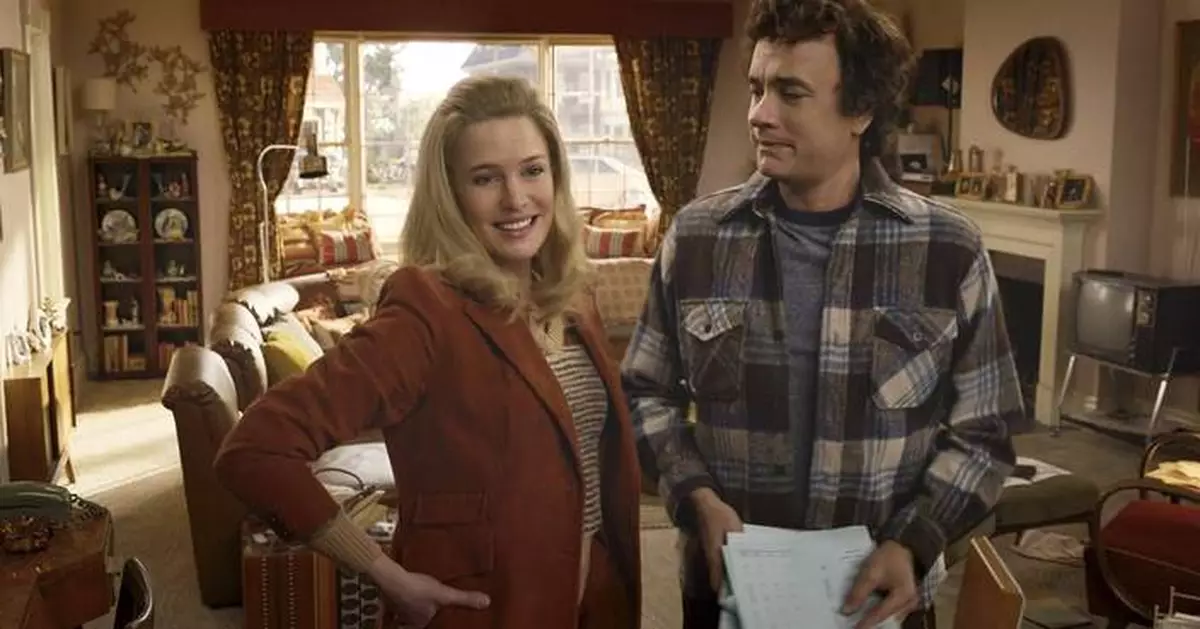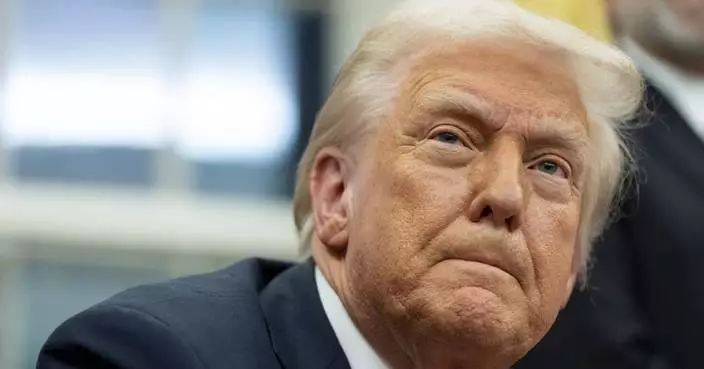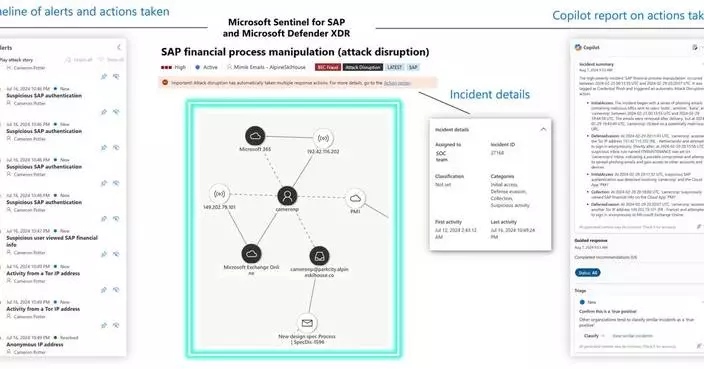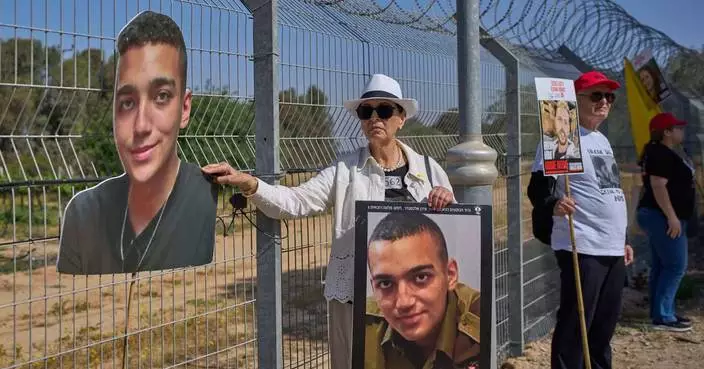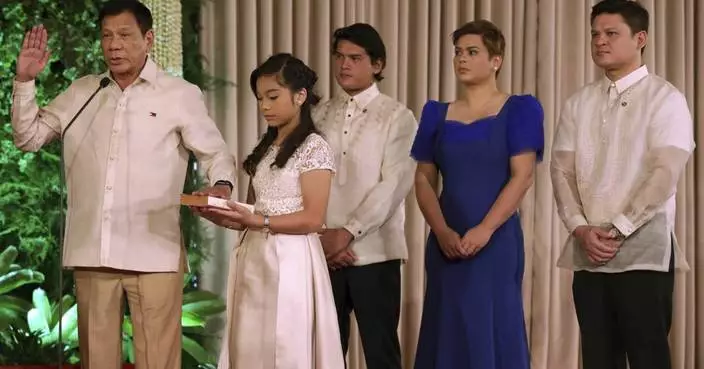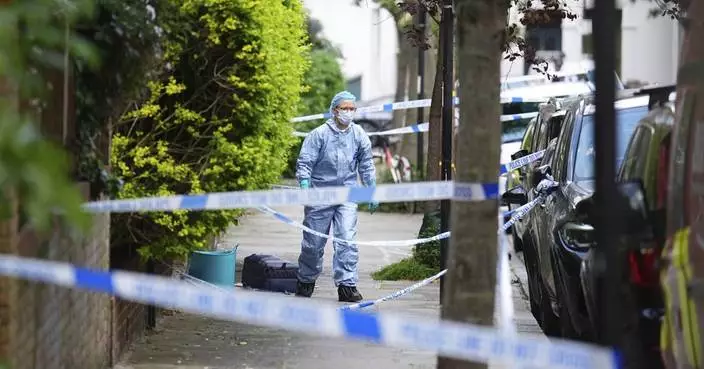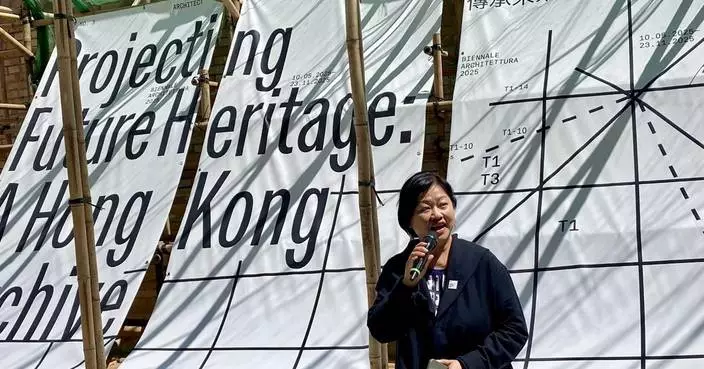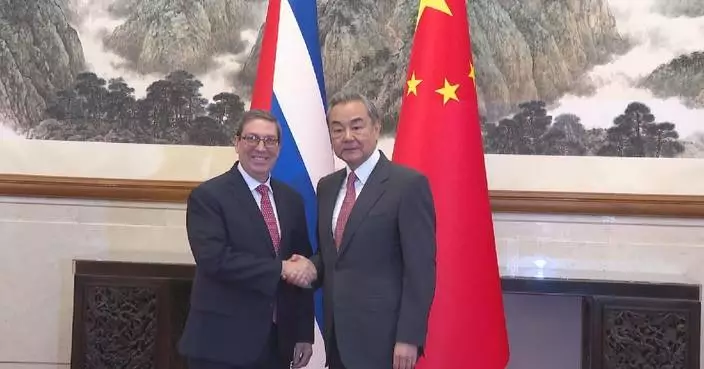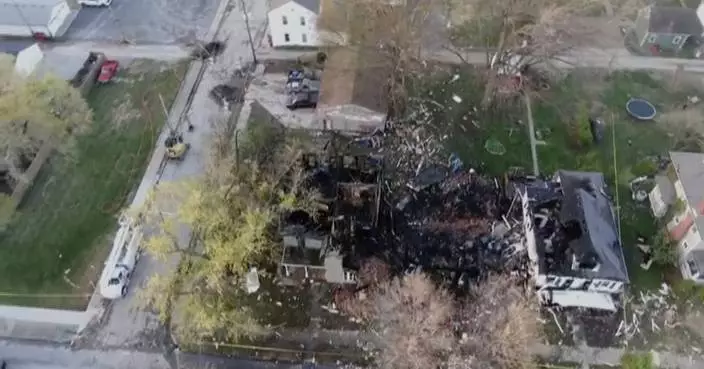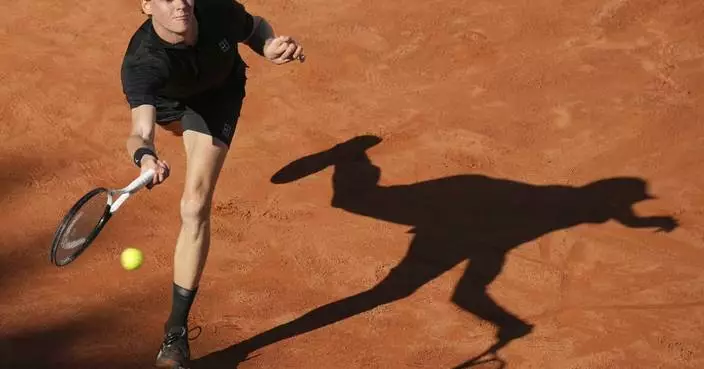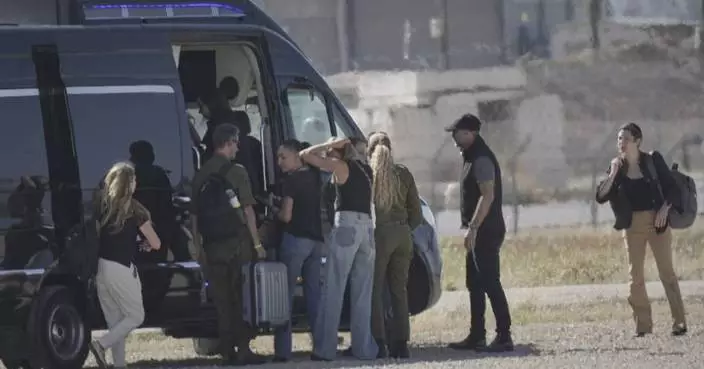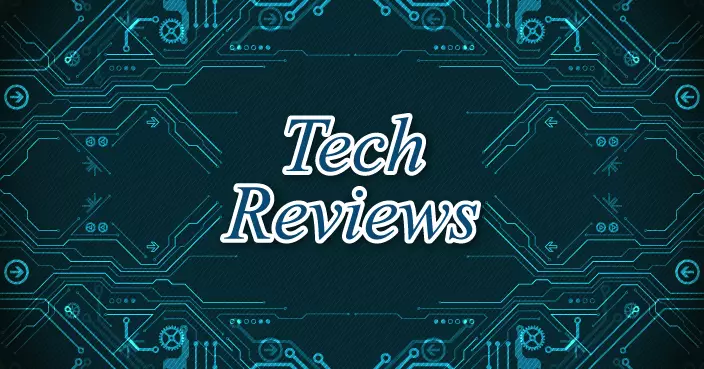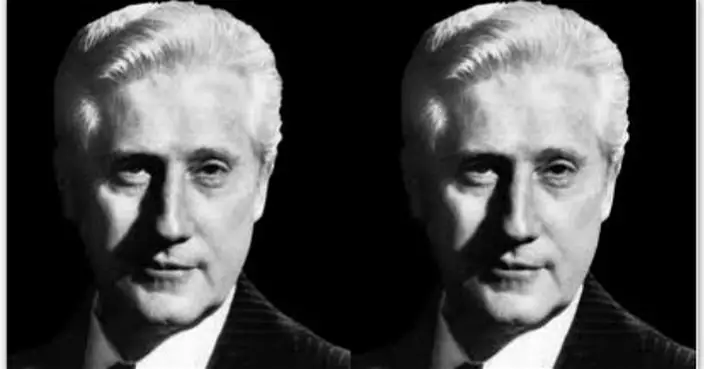Robert Zemeckis' latest movie is insanely ambitious, starting with the dinosaurs and ending in present day with the Roomba. But it's fixed on just one spot.
“Here” reunites Zemeckis, screenwriter Eric Roth and actors Tom Hanks and Robin Wright, who collaborated on “Forrest Gump.” This time, they’re not telling the larger-than-life story of a man moving through time — they’re telling the centuries-old story of a living room and all the different people who lived there.
Click to Gallery
This image released by Sony Pictures Entertainment shows filmmaker Robert Zemeckis, left, with actors Tom Hanks, center, and Robin Wright on the set of "Here." (Sony Pictures via AP)
This image released by Sony Pictures Entertainment shows filmmaker Robert Zemeckis, left, with actors Robin Wright, center, and Tom Hanks on the set of "Here." (Sony Pictures via AP)
This image released by Sony Pictures Entertainment shows Tom Hanks, left, and Robin Wright in a scene from "Here." (Sony Pictures via AP)
Tom Hanks, left, and Robin Wright arrive at the AFI Fest premiere of "Here" on Friday, Oct. 25, 2024, at TCL Chinese Theatre in Los Angeles. (AP Photo/Chris Pizzello)
This image released by Sony Pictures Entertainment shows Tom Hanks, left, and Robin Wright in a scene from "Here." (Sony Pictures via AP)
Tom Hanks, left, and Robin Wright arrive at the AFI Fest premiere of "Here" on Friday, Oct. 25, 2024, at TCL Chinese Theatre in Los Angeles. (AP Photo/Chris Pizzello)
This image released by Sony Pictures Entertainment shows Tom Hanks, right, and Robin Wright in a scene from "Here." (Sony Pictures via AP)
In this living room, we see a wedding, a death, a birth, a marriage tested, a funeral, lots of vacuuming, many birthdays, Christmases and Thanksgivings, some sex, adults getting drunk and Jazzercise.
Zemeckis puts the camera at a fixed angle for the movie's entire 105-minute duration without moving. It’s not so strange after a while — so bursting with life is each shot and vignette — but there’s a gnawing feeling that we’re in some sort of film experiment, like testing an audience on how long they'll watch old security camera footage.
The camera may not move but the eras do, melting back and forth in time from pre-history, to the 1700s, to the 1940s, back to hunter-gatherer times and then the ’60s and ’70s, before hitting the early 1900s. It begins and ends in 2022.
Hanks and Wright form the movie's spine, as Richard and Margaret. Over dozens of little scenes, we watch him as a boy grow up in the house and fall in love with Margaret, marry, move her in, have a baby and inherit it all. Whether they survive as a couple isn't guaranteed.
Zemeckis is a filmmaker known for incorporating the latest in technology and this time it’s de-aging as a visual effect, basically turning 68-year-old Hanks into what he looked like while filming “Splash.” It's a lot of work, clumsy often, and Zemeckis has gotten lost in the uncanny valley, trying to tell a very human story about what unites us but by altering the actors so much that the human connection is lost. Look closely and you'll see cigarette smoke go into one character, but never come out.
Other roles include Richard's parents — played brilliantly by Paul Bettany and Kelly Reilly — and some unconnected people: a fun-loving couple living in the home from 1925 to 1944, and a less fun couple in the early 1900s. There's an Indigenous couple in the 1600s who frolic in the space the living room will take over in 300 years and another family who rides out 2020 in the house amid the pandemic.
If that isn’t enough, we have an appearance by Benjamin Franklin. Why Benjamin Franklin? He's connected to the house across the street. What he adds is not entirely clear. The movie could do with fewer Founding Fathers and cutesy touches like hummingbirds.
We watch the living room as a TV is added — the Beatles' performance on “The Ed Sullivan Show” leads to “CHiPs” — and the vehicles outside go from horse to Model Ts to sedans. The home goes from $3,400 just after World War II to $1 million today and the fashions go from Victorian heeled boots to teased hair and American flag shirts.
“Here” — based on the graphic novel by Richard McGuire — is best when events at different times are linked — like when a roof starts leaking in one era only to dissolve into a pregnant woman's water breaking in another. Or when there's mention of influenza in 1918 and we later see the effects of the coronavirus pandemic.
One theme that is touched on but could have been strengthened is the impact of downsizing and economic disruptions on psyches, with Richard's father in full Willy Loman mode one day, sobbing after being laid off: “They shrunk me.” Deferred dreams are another, but there's not enough time for that if you've got silly visits by Benjamin Franklin. And while it's inclusive to embrace Native Americans, the scenes add little to the narrative.
“Here” fails to connect all these centuries of human experiences, other than to celebrate the human experience in all its messiness, triumph and sadness. In fact, if these walls could talk, most of the characters are happiest away from this living room. Maybe the strongest theme is uttered by one character lamenting: “Time just went.”
Zemeckis nicely apes the graphic novel's use of squares within the frame that show a peek at what's going on in different eras — like little time travel devices — and kudos to Jesse Goldsmith for fantastic editing work.
But one visual trick sums up the movie: It’s supposed to be the story of a real wood-and-brick house, but it was filmed at Sony’s studio complex in Culver City, California. The main character is fake. “Here” is nowhere.
“Here,” a Sony Pictures release that premieres Friday in theaters, is rated PG-13 for “thematic material, some suggestive material, brief strong language and smoking.” Running time: 105 minutes. Two and a half stars out of four.
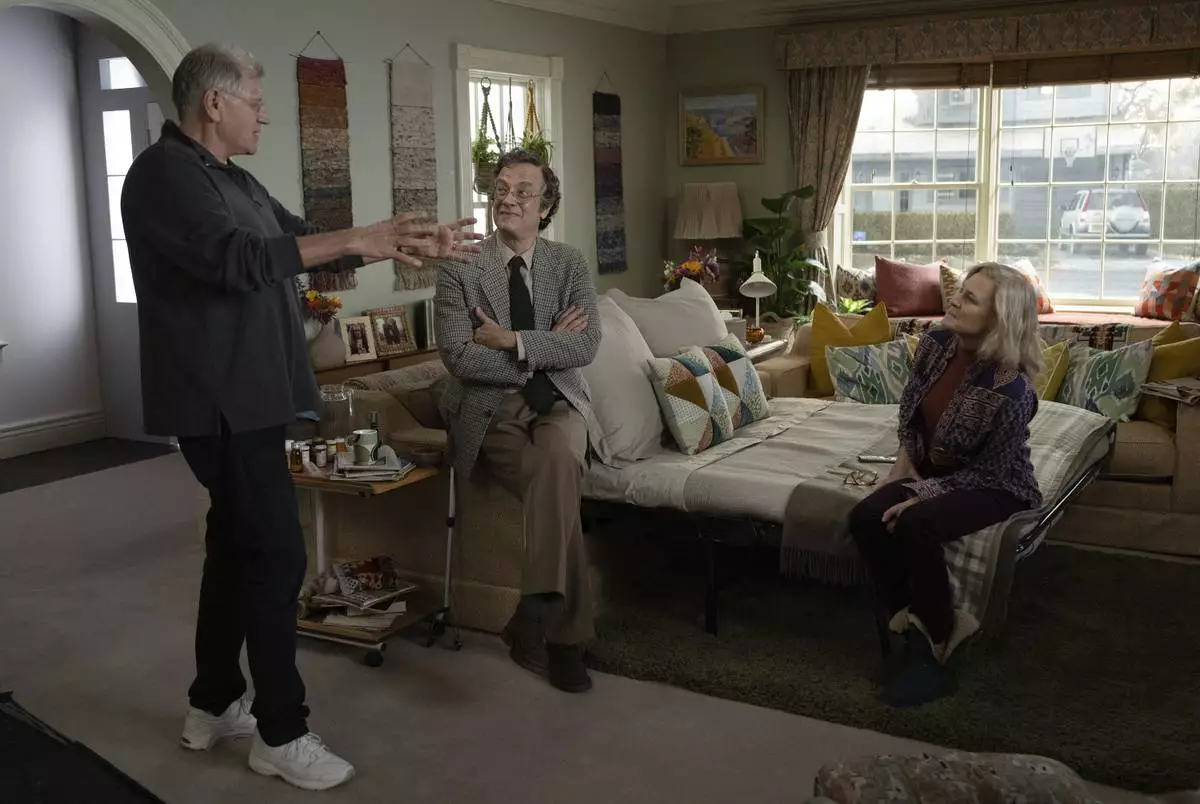
This image released by Sony Pictures Entertainment shows filmmaker Robert Zemeckis, left, with actors Tom Hanks, center, and Robin Wright on the set of "Here." (Sony Pictures via AP)
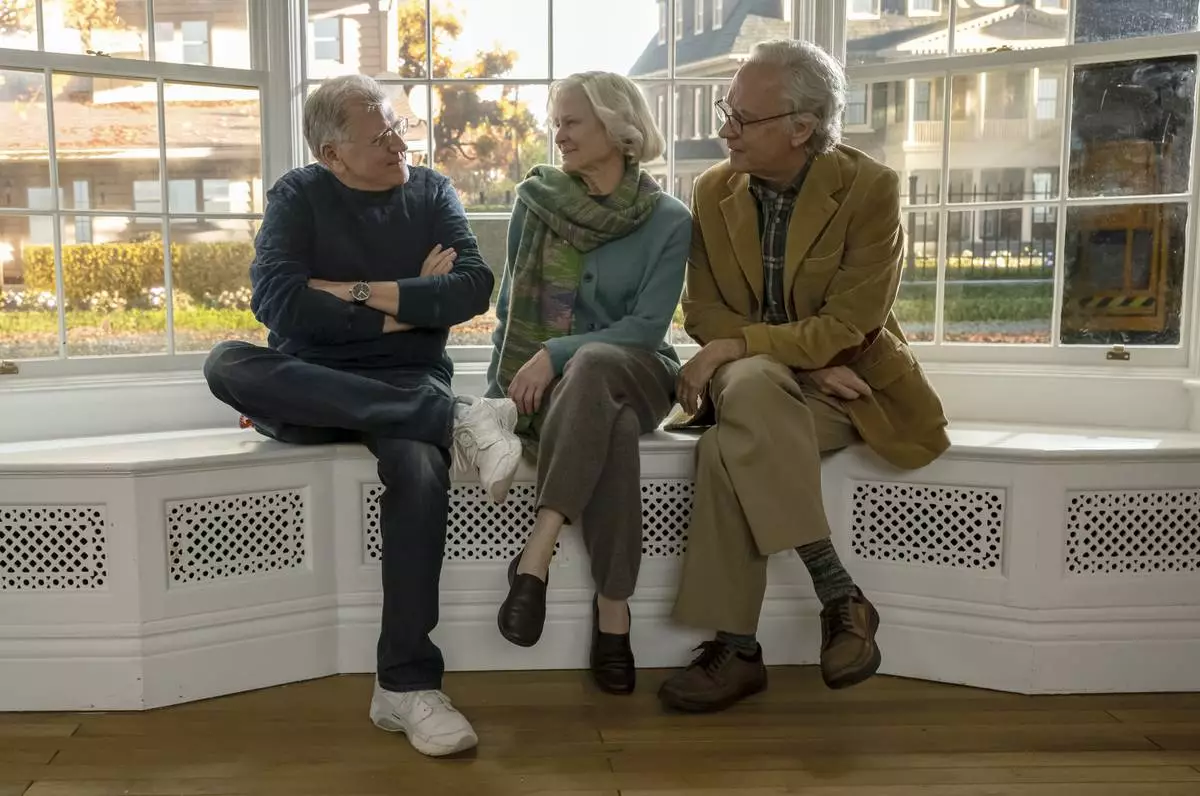
This image released by Sony Pictures Entertainment shows filmmaker Robert Zemeckis, left, with actors Robin Wright, center, and Tom Hanks on the set of "Here." (Sony Pictures via AP)
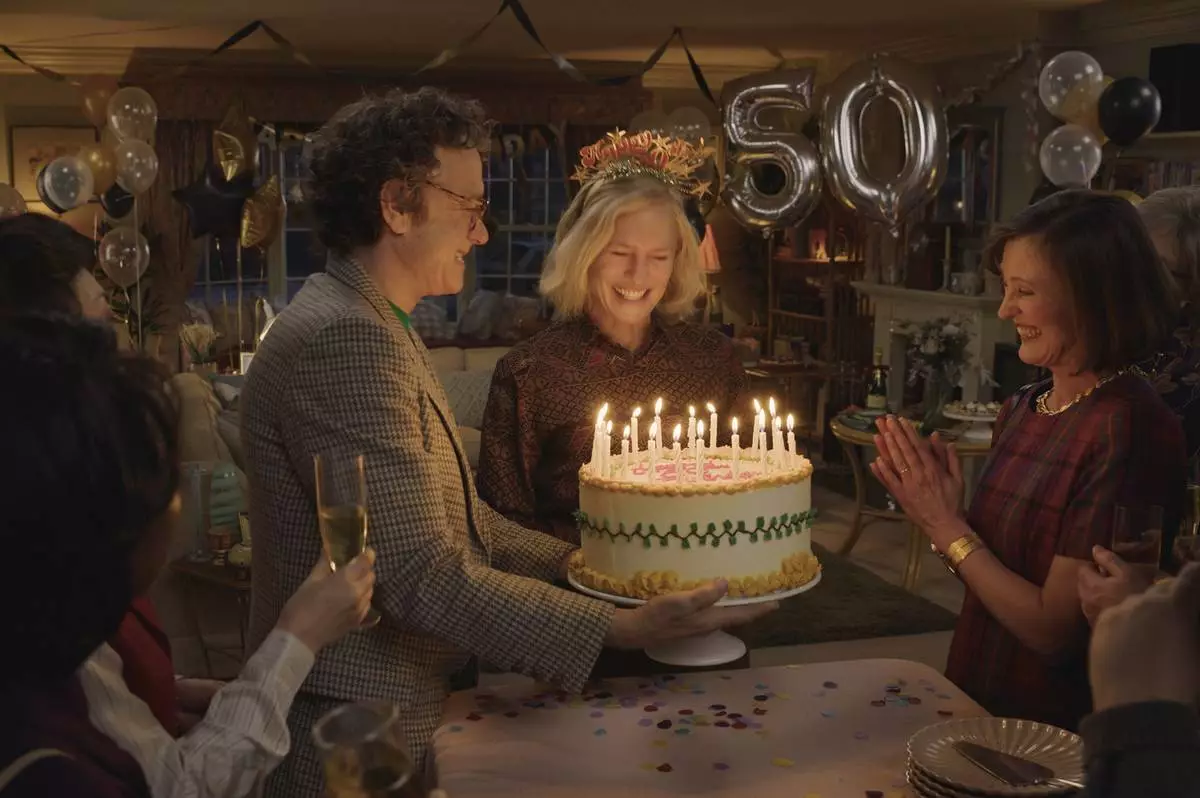
This image released by Sony Pictures Entertainment shows Tom Hanks, left, and Robin Wright in a scene from "Here." (Sony Pictures via AP)
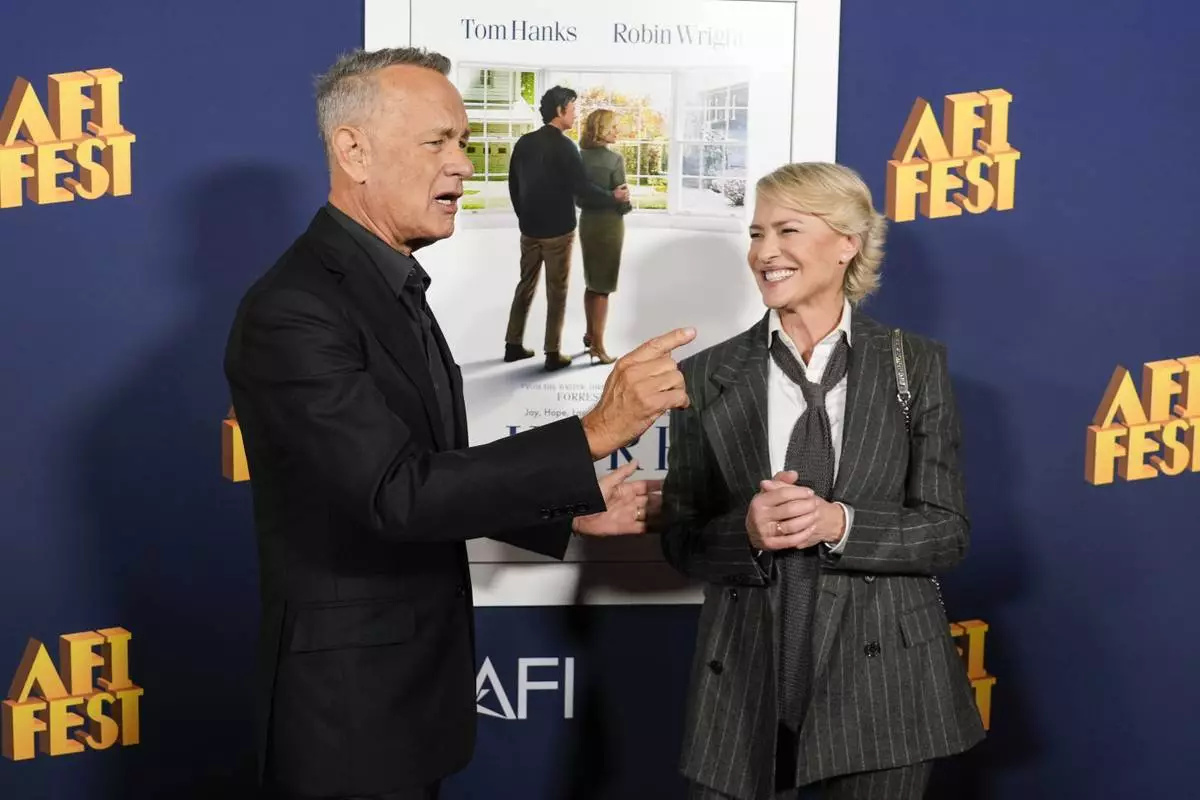
Tom Hanks, left, and Robin Wright arrive at the AFI Fest premiere of "Here" on Friday, Oct. 25, 2024, at TCL Chinese Theatre in Los Angeles. (AP Photo/Chris Pizzello)
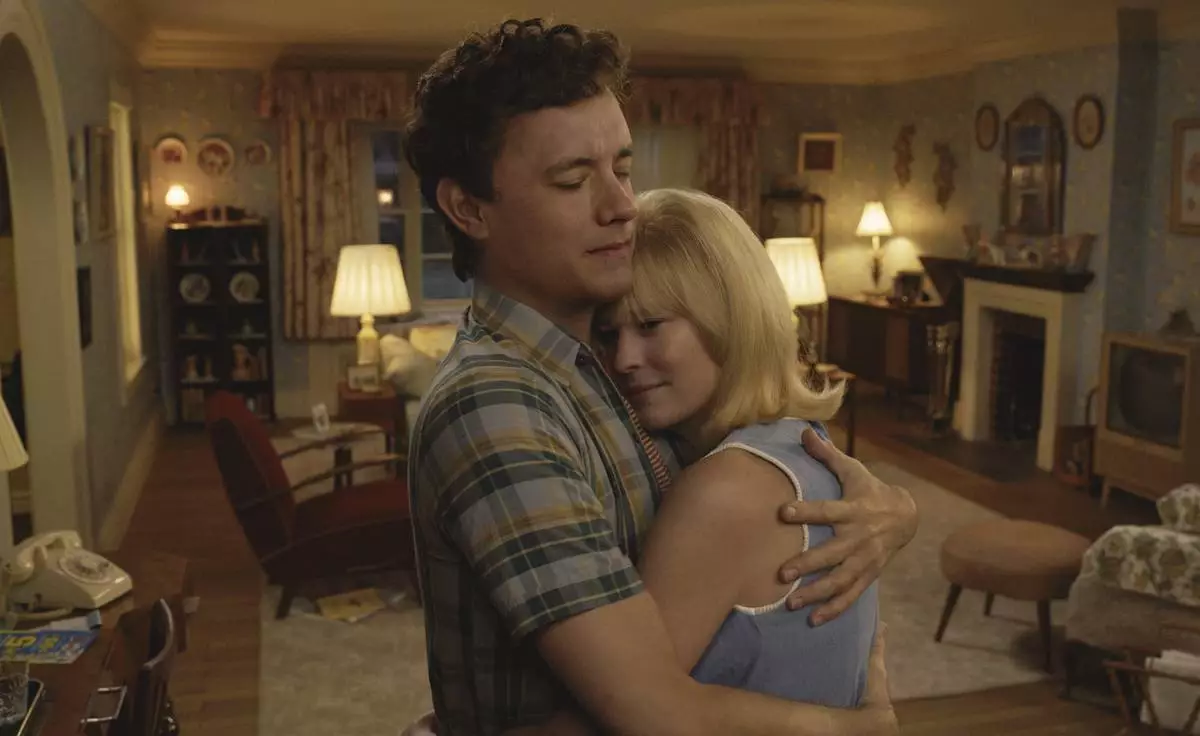
This image released by Sony Pictures Entertainment shows Tom Hanks, left, and Robin Wright in a scene from "Here." (Sony Pictures via AP)
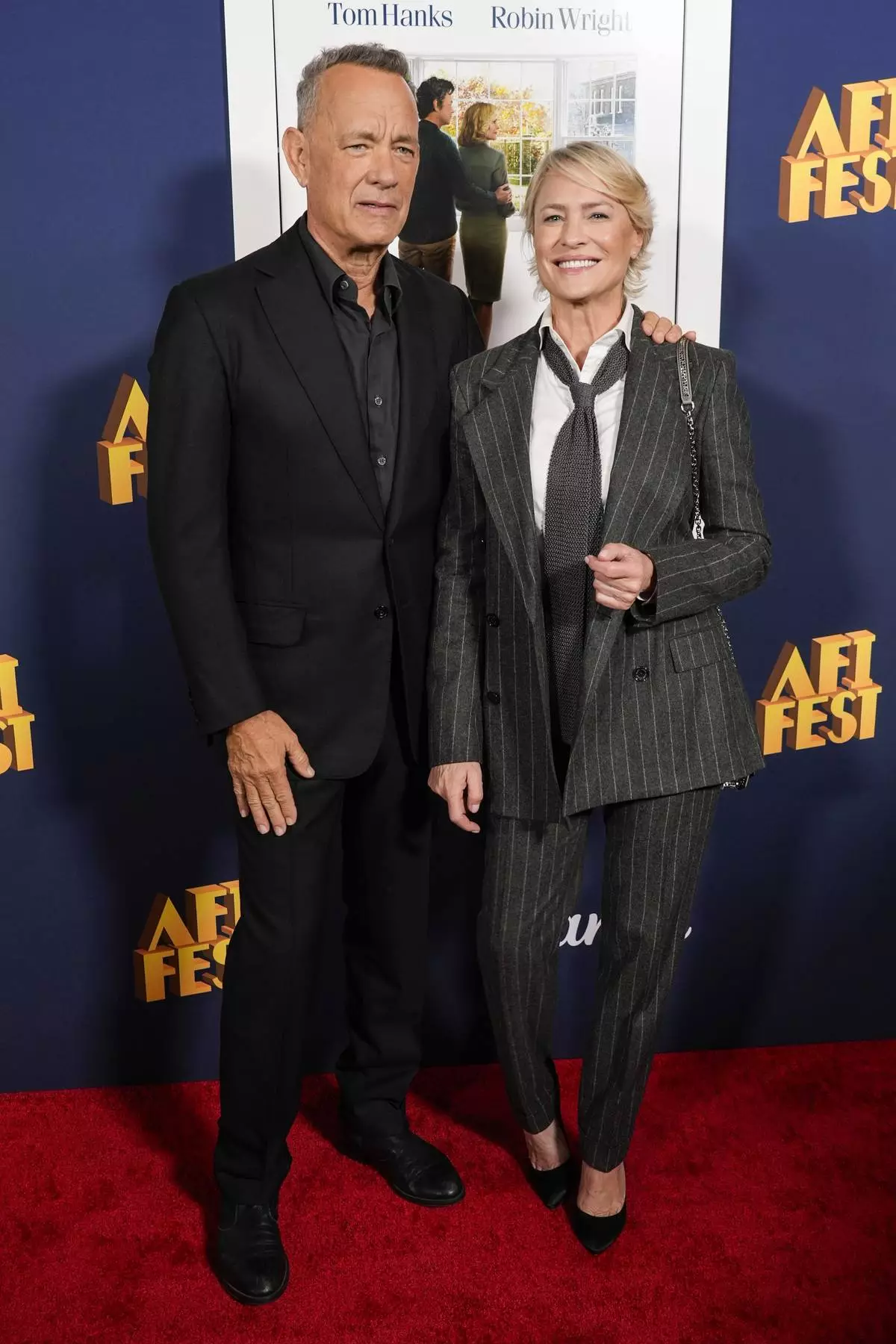
Tom Hanks, left, and Robin Wright arrive at the AFI Fest premiere of "Here" on Friday, Oct. 25, 2024, at TCL Chinese Theatre in Los Angeles. (AP Photo/Chris Pizzello)
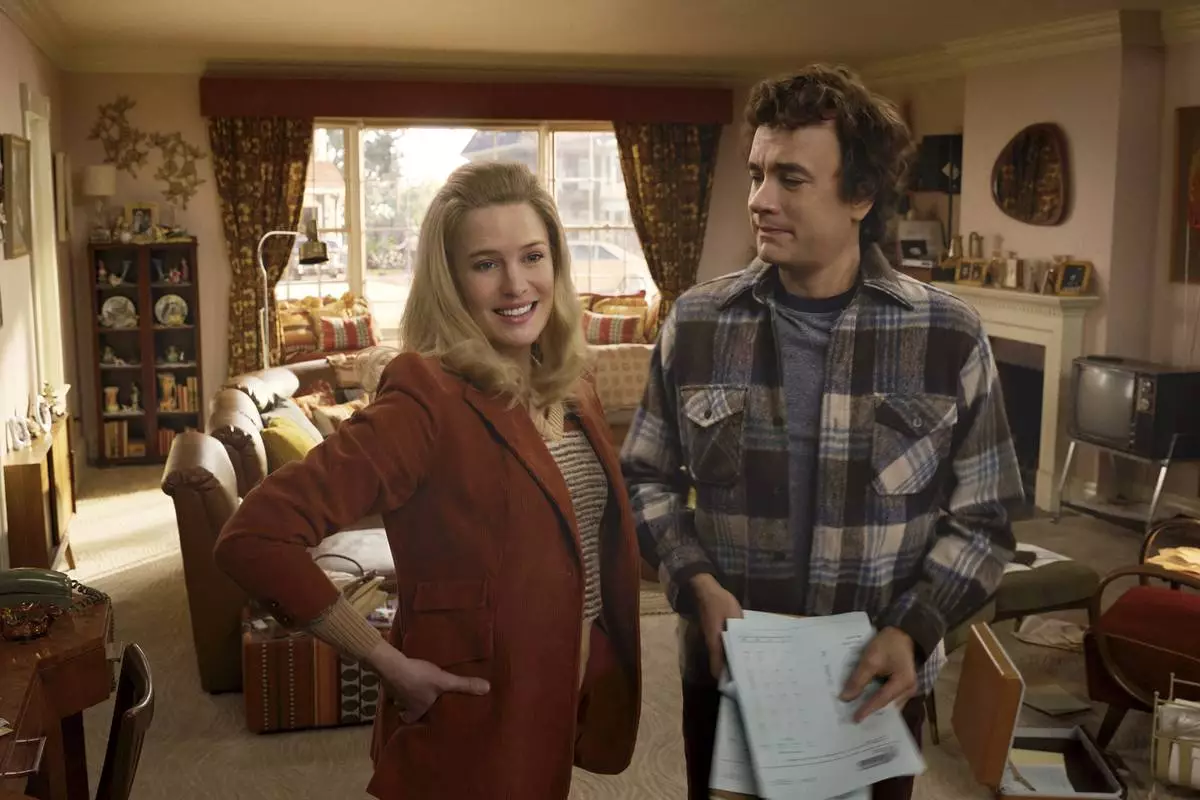
This image released by Sony Pictures Entertainment shows Tom Hanks, right, and Robin Wright in a scene from "Here." (Sony Pictures via AP)
RIYADH, Saudi Arabia (AP) — President Donald Trump opened his four-day Mideast trip on Tuesday by paying a visit to Saudi Arabia's de facto ruler, Crown Prince Mohammed bin Salman, for talks on U.S. efforts to dismantle Iran's nuclear program, end the war in Gaza, hold down oil prices and more.
Bin Salman warmly greeted Trump as he stepped off Air Force One and kicked off his Middle East tour.
The two leaders then retreated to a grand hall at the Riyadh airport, where Trump and his aides were served traditional Arabic coffee by waiting attendants wearing ceremonial gun-belts.
The pomp began before Trump even landed. Royal Saudi Air Force F-15s provided an honorary escort for Air Force One as it approached the kingdom’s capital.
The crown prince will fete Trump with a formal dinner and Trump is slated to take part later Tuesday in a U.S.-Saudi investment conference.
“When Saudis and Americans join forces, very good things happen — more often than not, great things happen," Saudi Investment Minister Khalid al-Falih said.
Saudi Arabia and fellow OPEC+ nations have already helped their cause with Trump early in his second term by stepping up oil production. Trump sees cheap energy as a key component to lowering costs and stemming inflation for Americans. The president has also made the case that lower oil prices will hasten an end to Russia's war on Ukraine.
But Saudi Arabia's economy remains heavily dependent on oil, and the kingdom needs a fiscal break-even oil price of $96 to $98 a barrel to balance its budget. It's questionable how long OPEC+, of which Saudi Arabia is the leading member, is willing to keep production elevated. The price of a barrel of Brent crude closed Monday at $64.77.
“One of the challenges for the Gulf states of lower oil prices is it doesn’t necessarily imperil economic diversification programs, but it certainly makes them harder,” said Jon Alterman, a senior Middle East analyst at the Center for Strategic and International Studies in Washington.
Trump picked the kingdom for his first stop because it has pledged to make big investments in the U.S., but Trump ended up traveling to Italy last month for Pope Francis’ funeral. Riyadh was the first overseas stop of his first term.
The three countries on the president's itinerary — Saudi Arabia, Qatar and the United Arab Emirates — are all places where the Trump Organization, run by Trump's two elder sons, is developing major real estate projects. They include a high-rise tower in Jeddah, a luxury hotel in Dubai and a golf course and villa complex in Qatar.
Trump is trying to demonstrate that his transactional strategy for international politics is paying dividends as he faces criticism from Democrats who say his global tariff war and approach to Russia’s war on Ukraine are isolating the United States from allies.
He’s expected to announce deals with the three wealthy countries that will touch on artificial intelligence, expanding energy cooperation and perhaps new arms sales to Saudi Arabia. The administration earlier this month announced initial approval to sell $3.5 billion worth of air-to-air missiles for Saudi Arabia’s fighter jets.
But Trump arrives in the Mideast at a moment when his top regional allies, Israel and Saudi Arabia, are far from neatly aligned with his approach.
Ahead of the trip, Trump announced that the U.S. was halting a nearly two-month U.S. airstrike campaign against Yemen’s Houthis, saying the Iran-backed rebels have pledged to stop attacking ships along a vital global trade route.
The administration didn’t notify Israel — which the Houthis continue to target — of the agreement before Trump publicly announced it. It was the latest example of Trump leaving the Israelis in the dark about his administration’s negotiations with common adversaries.
In March, Israeli Prime Minister Benjamin Netanyahu wasn’t notified by the administration until after talks began with Hamas about the war in Gaza. And Netanyahu found out about the ongoing U.S. nuclear talks with Iran only when Trump announced them during an Oval Office visit by the Israeli leader last month.
“Israel will defend itself by itself,” Netanyahu said last week following Trump’s Houthi truce announcement. “If others join us — our American friends — all the better."
William Wechsler, senior director of the Rafik Hariri Center and Middle East Programs at the Atlantic Council, said Trump’s decision to skip Israel on his first Middle East visit is remarkable.
“The main message coming out of this, at least as the itinerary stands today, is that the governments of the Gulf ... are in fact stronger friends to President Trump than the current government of Israel at this moment,” Wechsler said.
Trump, meanwhile, hopes to restart his first-term effort to normalize relations between the Middle East’s major powers, Israel and Saudi Arabia. Trump’s Abraham Accords effort led to Sudan, the UAE, Bahrain and Morocco agreeing to normalize relations with Israel.
But Riyadh has made clear that in exchange for normalization it wants U.S. security guarantees, assistance with the kingdom’s nuclear program and progress on a pathway to Palestinian statehood. There seems to be scant hope for making headway on a Palestinian state with the Israel-Hamas war raging and the Israelis threatening to flatten and occupy Gaza.
Bin Salman last week notably hosted Palestinian Vice President Hussein Sheikh in Jeddah on the sheikh’s first foreign visit since assuming office in April.
Hussain Abdul-Hussain, a research fellow at the Foundation for Defense of Democracies, said the crown prince appeared to be subtly signaling to Trump that the kingdom needs to see progress on Palestinian statehood for the Saudis to begin seriously moving on a normalization deal with the Israelis.
“Knowing how the Saudis telegraph their intentions, that’s a preemptive, ‘Don’t even think of asking us to show any goodwill toward normalization,’” Abdul-Hussain said.
Trump says he will decide during the trip how the U.S. government will refer to the body of water now commonly known as the Persian Gulf. He told reporters that he expects his hosts will ask him about the U.S. officially calling the waterway the Arabian Gulf or Gulf of Arabia.
Abbas Aragachi, the Iranian foreign minister, has warned that changing how the U.S. refers to the waterway would compel the “wrath of all Iranians from all walks of life and political persuasion in Iran, the U.S. and across the world.”
—
Madhani reported from Dubai, United Arab Emirates
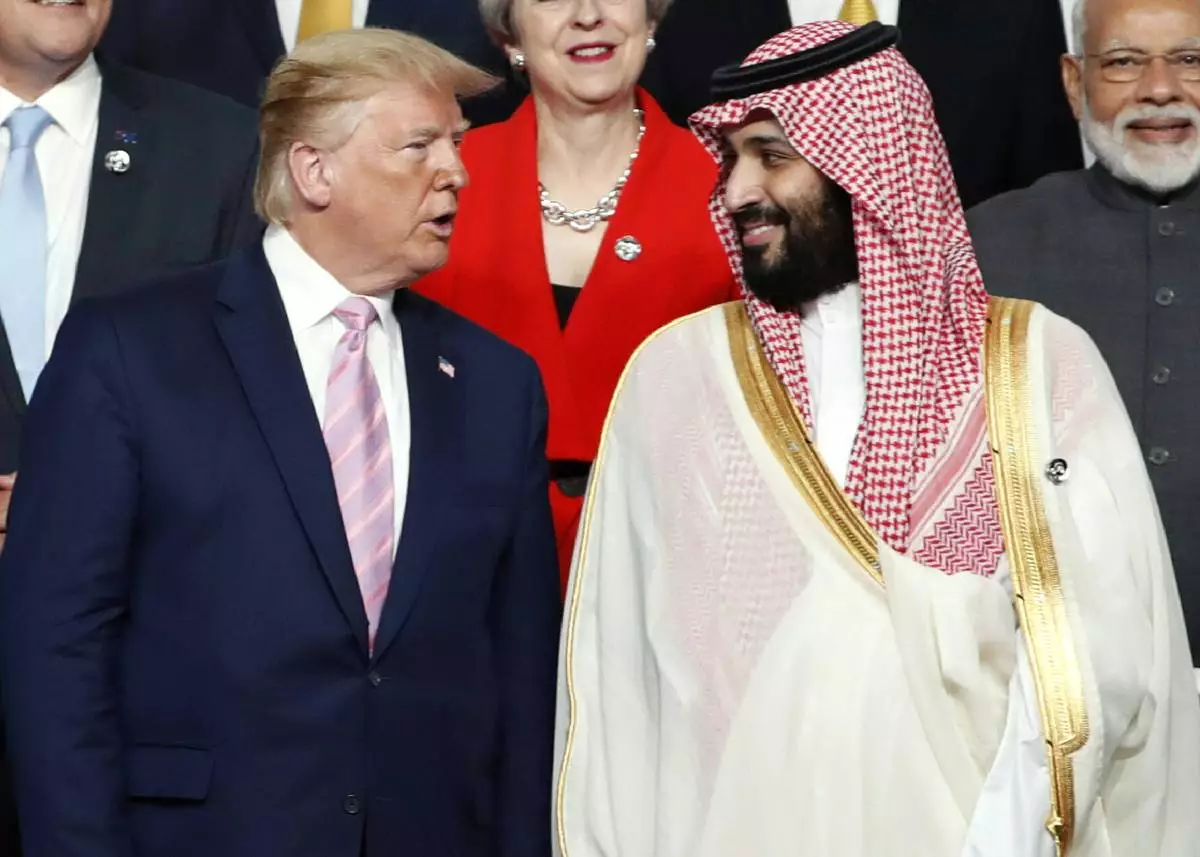
President Donald Trump, left, speaks with Saudi Arabia's Crown Prince Mohammed bin Salman during family photo session at G-20 leaders summit in Osaka, Japan, June 28, 2019. (Kim Kyung-Hoon/Pool Photo via AP, File)









